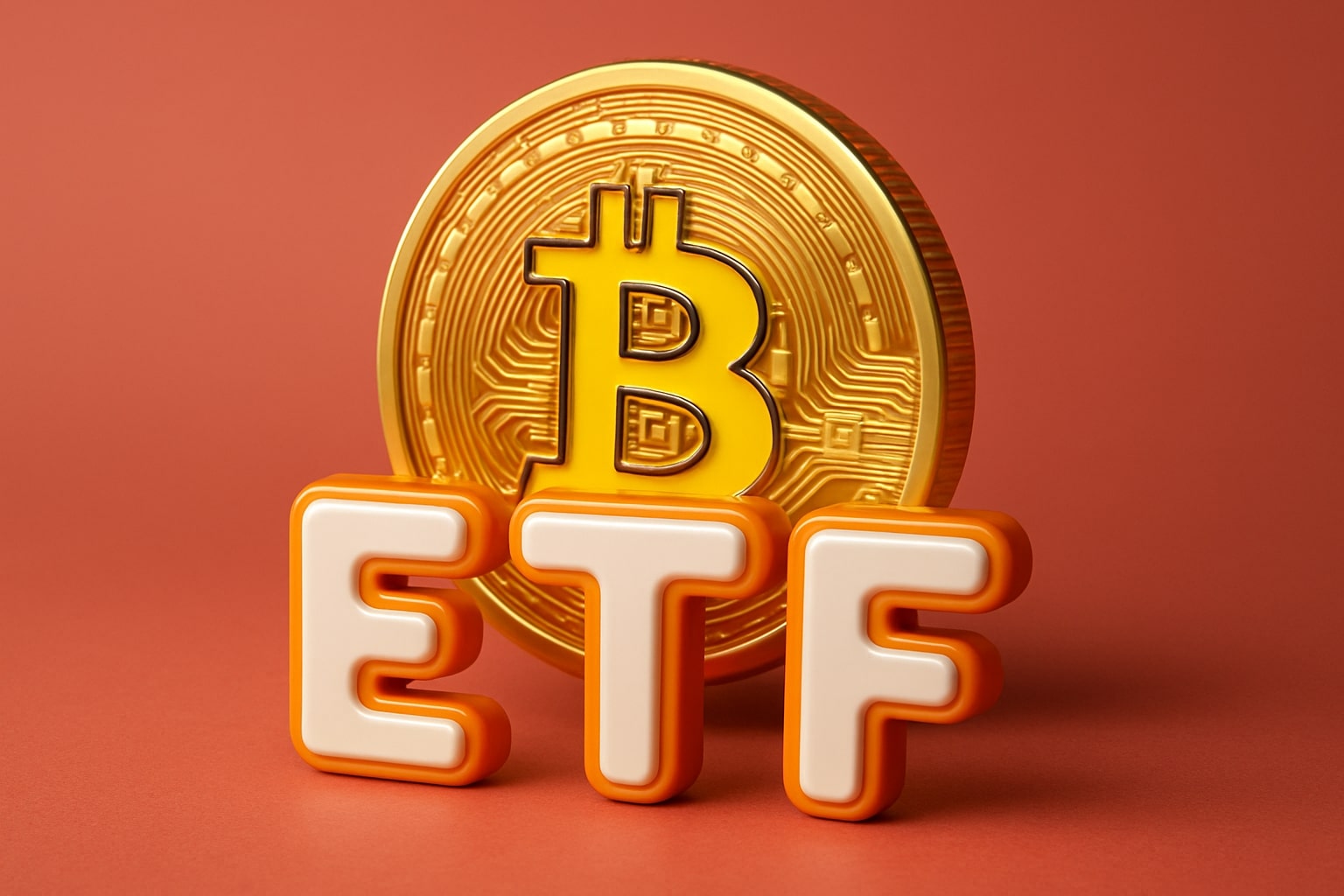
Bitcoin Price Outlook: Will BTC-USD Hold Above $100,000 or Correct Lower?
With Bitcoin's price hovering at $102,907, is it a good time for investors to buy BTC-USD, or is a correction on the horizon as it struggles to maintain momentum above $105,000? How will macroeconomic events, like the US-China trade truce, affect Bitcoin's price in the short term? | That's TradingNEWS
Bitcoin Price Analysis: A Crucial Crossroads for BTC-USD
Current Market Dynamics: Bitcoin Faces Correction Amid Global Economic Shifts
Bitcoin (BTC-USD) continues to experience volatility as it struggles to maintain momentum above the $100,000 mark. The world's leading cryptocurrency reached an intraday high of $105,720 on May 12, 2025, but has since retreated to the $102,907 level. Despite a strong surge last week, Bitcoin faces an uncertain path due to macroeconomic factors that are shifting investor attention away from alternative assets like BTC-USD and back toward traditional stock markets. The recent easing of US-China trade tensions has led to a rally in stock indices, taking some of the attention away from Bitcoin’s bullish narrative. But is this dip temporary, or is Bitcoin about to experience a more significant pullback?
BTC-USD Price Dynamics and Market Response to US-China Trade Deal
The recent decline in Bitcoin’s price can be attributed to a combination of profit-taking and broader market shifts, especially following news of a US-China trade deal. On May 12, the price of BTC-USD saw a sharp correction after the announcement of a 90-day tariff truce between the two largest economies in the world. This news initially sparked optimism in equity markets, but Bitcoin’s price fell to $102,907, despite hitting $105,720 just hours earlier. The truce led to a reduction in US tariffs on Chinese goods from 145% to 30%, while China agreed to lower retaliatory tariffs from 125% to 10%. While this deal boosted traditional markets, it’s also crucial to understand why Bitcoin reacted negatively to what would otherwise be viewed as a favorable development for risk assets.
The Relationship Between Bitcoin and Traditional Markets: Correlation or Divergence?
Bitcoin has shown a strong correlation with the S&P 500, with a 30-day correlation of 83%. As the stock market experienced a boost from the trade agreement, Bitcoin’s gains have slowed, leading to investor speculation that BTC’s correlation with equities might be influencing its price action. Despite its 24% price increase over the past 30 days, Bitcoin was unable to maintain its bullish trend, while traditional stocks, including the S&P 500, saw a strong 7% rise in the same period. This shift highlights an important question: Is Bitcoin’s role as a hedge or a safe-haven asset waning in favor of equities?
Institutional Demand for Bitcoin: A Major Factor in Price Movement
Bitcoin's institutional adoption continues to grow, with entities like Strategy (formerly MicroStrategy) acquiring large amounts of BTC. Between May 5 and May 11, Strategy added 13,390 BTC to its holdings, bringing its total BTC stash to approximately 568,840 BTC. This large-scale institutional buying is often seen as a key factor in supporting Bitcoin’s price. But there are concerns surrounding the sustainability of this buying spree. Critics, including well-known economist Peter Schiff, suggest that these institutions may face pressure due to the increasing cost of holding Bitcoin and the possibility of future sell-offs if the price begins to dip. Does this institutional demand indicate that Bitcoin’s price is being propped up artificially, or is the long-term trend of increasing institutional interest still intact?
Bitcoin’s Role as a Digital Asset in the Macro Environment
In the larger context of global economics, Bitcoin has been caught in a tug-of-war between risk appetite and safe-haven demand. The temporary reduction in US-China tariffs has led to a boost in investor sentiment, especially within the stock markets. However, Bitcoin, often viewed as a speculative asset, is more sensitive to macroeconomic trends than many traditional investors may realize. For instance, Bitcoin is increasingly being seen as a digital commodity akin to gold, but without the intrinsic value support that gold offers. This dynamic has been further complicated by Bitcoin’s relatively high correlation with the broader stock market, which suggests that its role as a standalone asset for risk management might not be as robust as initially anticipated. As the US Dollar strengthens and gold prices falter, can Bitcoin continue to maintain its position as a safe-haven alternative?
The Current Technical Picture: Bearish Momentum or Bullish Continuation?
On the technical front, Bitcoin has recently shown signs of bullish continuation, with the price testing higher levels above $105,000. However, this momentum has started to stall, and short-term technical indicators show that BTC-USD may be entering a period of consolidation. The Relative Strength Index (RSI) for Bitcoin is hovering near the overbought territory, reflecting a potential risk of short-term pullbacks. While Bitcoin’s long-term outlook remains positive, with projected price targets of $150,000 based on bullish chart patterns, the immediate resistance around $106,000 is proving difficult to overcome. Should Bitcoin clear this level with strong volume, it would likely push toward its next target of $127,600, but until that happens, a correction back toward the $100,000 zone is entirely plausible.
Investor Sentiment and Institutional Inflows: What Does It Mean for BTC-USD?
Bitcoin has shown resilience in its recent rallies, largely driven by institutional inflows and growing adoption across traditional finance. Over the past week, Bitcoin exchange-traded funds (ETFs) have seen record-breaking inflows, with over $2 billion in new capital entering Bitcoin spot ETFs. This institutional appetite for BTC-USD suggests a strong foundation for future price growth. Additionally, Bitcoin’s recent rally to above $105,000 aligns with the continuation of a bull flag pattern, a technical formation that typically indicates a continuation of upward momentum. However, there are concerns about Bitcoin’s overbought conditions in the short-term, with indicators like the RSI signaling that some profit-taking may occur before another push higher. How much of Bitcoin’s recent rally is sustainable, and will the growing institutional interest help Bitcoin break through key resistance levels or lead to a correction?
Bitcoin Price Outlook: Is BTC-USD Still a Buy or Is the Market Overheating?
With Bitcoin’s current price near $102,907, investors face a decision on whether this is a buying opportunity or a sign to pull back. The recent correction after hitting $105,000 raises concerns, but institutional flows remain strong, suggesting that the market may still be in the early stages of a larger rally. While technicals show support around $100,000, Bitcoin’s ability to break through key resistance levels like $106,000 remains a critical factor. With increasing institutional participation, Bitcoin’s long-term fundamentals are solid, but near-term volatility could lead to a pullback. Given the current macroeconomic conditions, is now the right time to buy, or should investors wait for further confirmation before taking action? Will Bitcoin continue its bullish momentum, or is a period of consolidation on the horizon?
That's TradingNEWS
Read More
-
S&P 500 SPY ETF (NYSEARCA:SPY) Holds $667 as AI Spending Surge Counters Weak Labor Momentum
07.11.2025 · TradingNEWS ArchiveStocks
-
Ripple’s XRP ETFs soar — XRPR up 6.41% to $19.27 and XRPI up 7.34% to $13.89
07.11.2025 · TradingNEWS ArchiveCrypto
-
Natural Gas Price Forecast - NG=F Steadies at $4.33 as 110.1 Bcf/day Output and Cold Front Shape Price Outlook
07.11.2025 · TradingNEWS ArchiveCommodities
-
USD/JPY Price Forecast - Dollar to Yen Pulls Back to 152.85 as 153K U.S. Job Cuts
07.11.2025 · TradingNEWS ArchiveForex

















